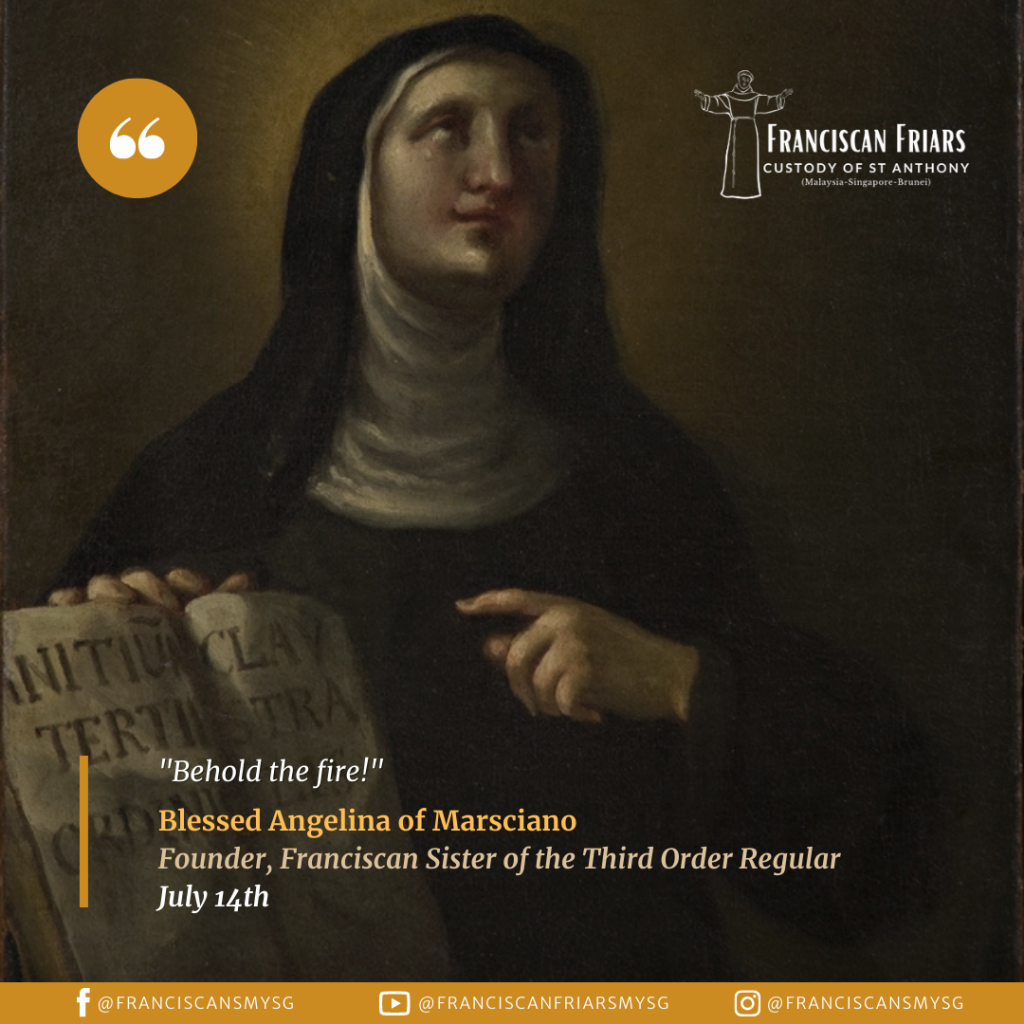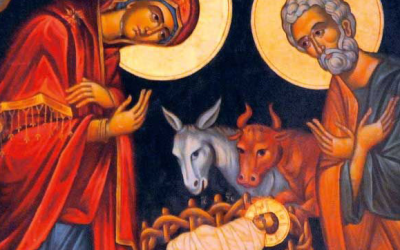
Angelina, who was raised in a noble family, married the count of Civitella when she was fifteen. Two years later, her husband died, and Angelina inherited his title and castle. Straightaway, she put on the habit of a Franciscan tertiary and gathered her female attendants into a religious community. Together they began to travel throughout the region, calling sinners to conversion and extolling the virtues of virginity. So effective were her paeans to virginity that she was deemed a threat to civil order. Placed under arrest, she was denounced as a witch (because of her sway over young girls) and a heretic (because of her supposed rejection of marriage). Yet, when she was brought before King Ladislas of Naples, who was fully prepared to have her burned, she mounted an effective defense. “If I have taught or practiced error,” she said, “I am prepared to suffer the appropriate punishment.” With that she drew back her cloak to reveal burning embers, hidden within. The king was sufficiently impressed that he spared her the worst punishment. Still, he exiled her from the kingdom.
On pilgrimage to Assisi, Angelina received a vision that she should found an enclosed monastery of the Third Order Regular of St. Francis in Foligno. In 1397, with support from the local bishop, she accomplished this plan. Other communities gradually affiliated with her convent, and they were recognized as a new congregation in 1428. Angelina died on July 14, 1435. She was beatified in 1825.
Source : The Franciscan Saints (Franciscan Media)





0 Comments